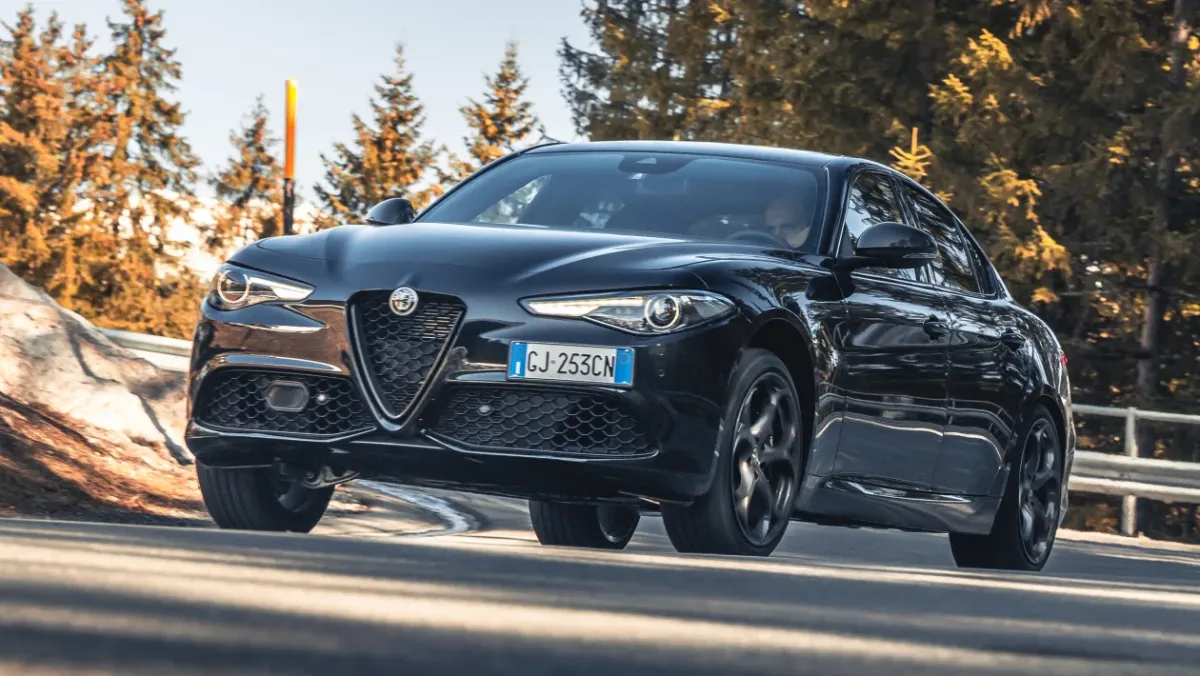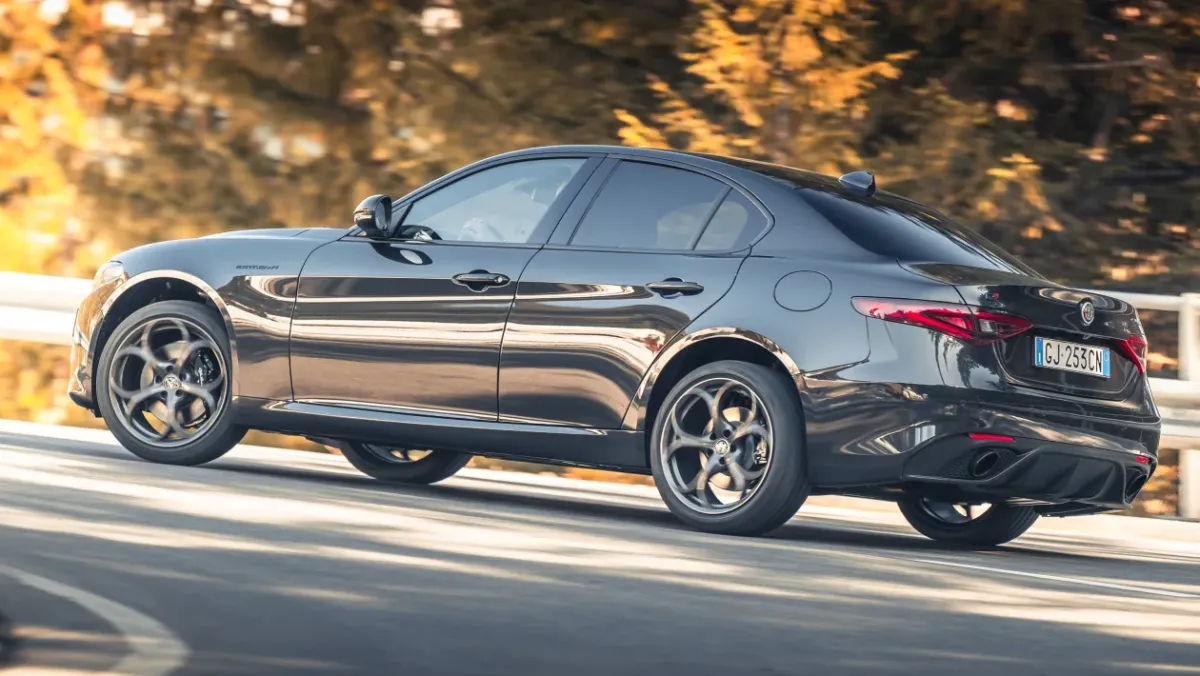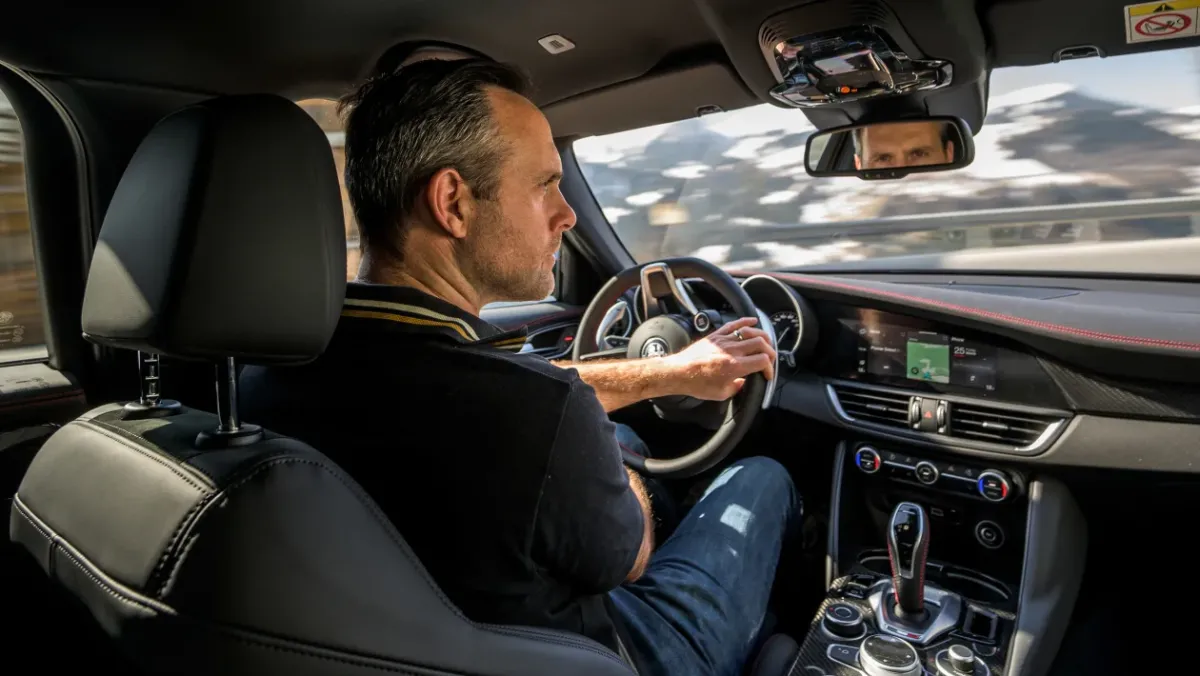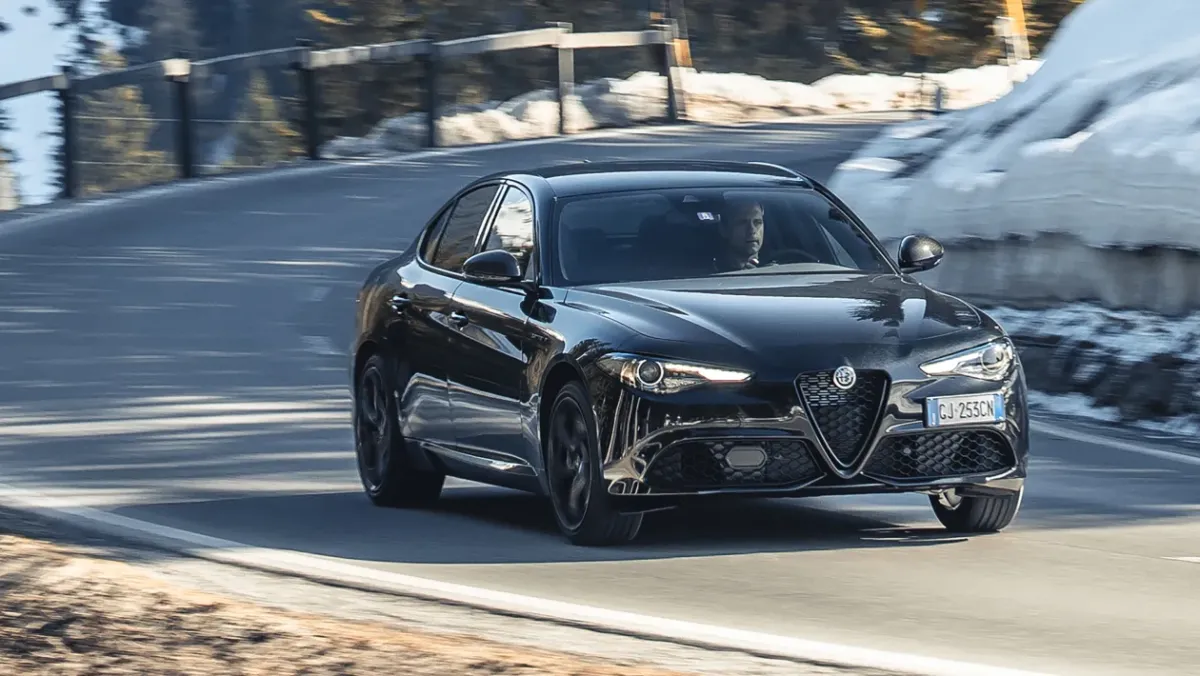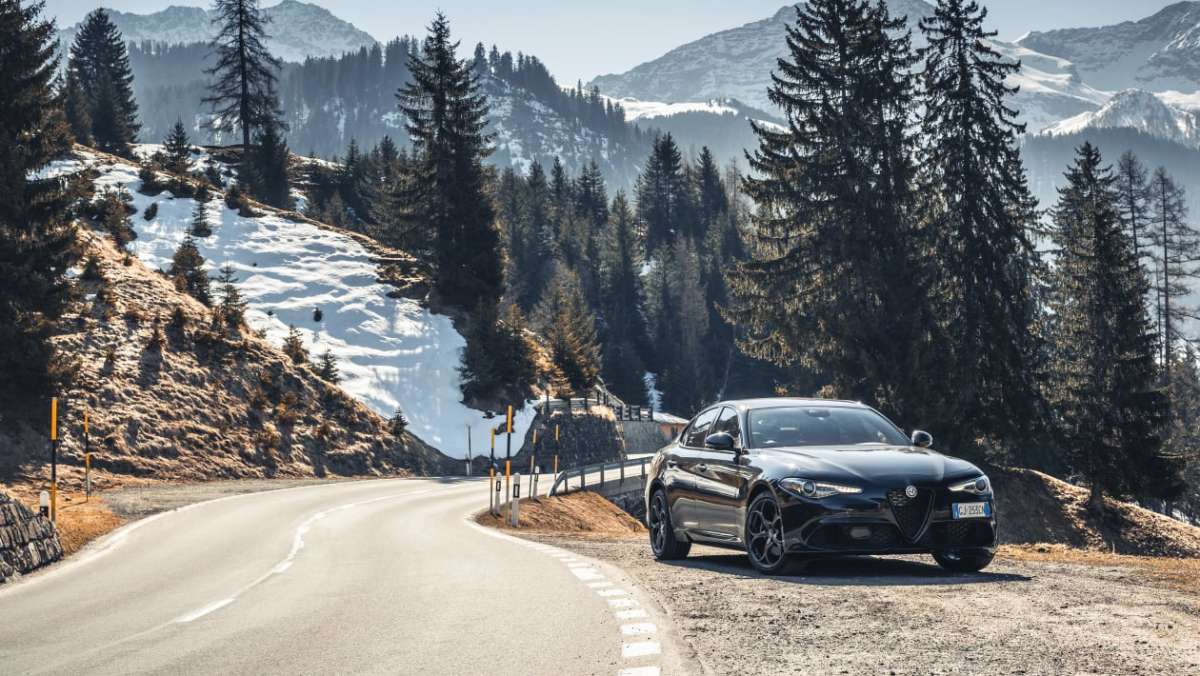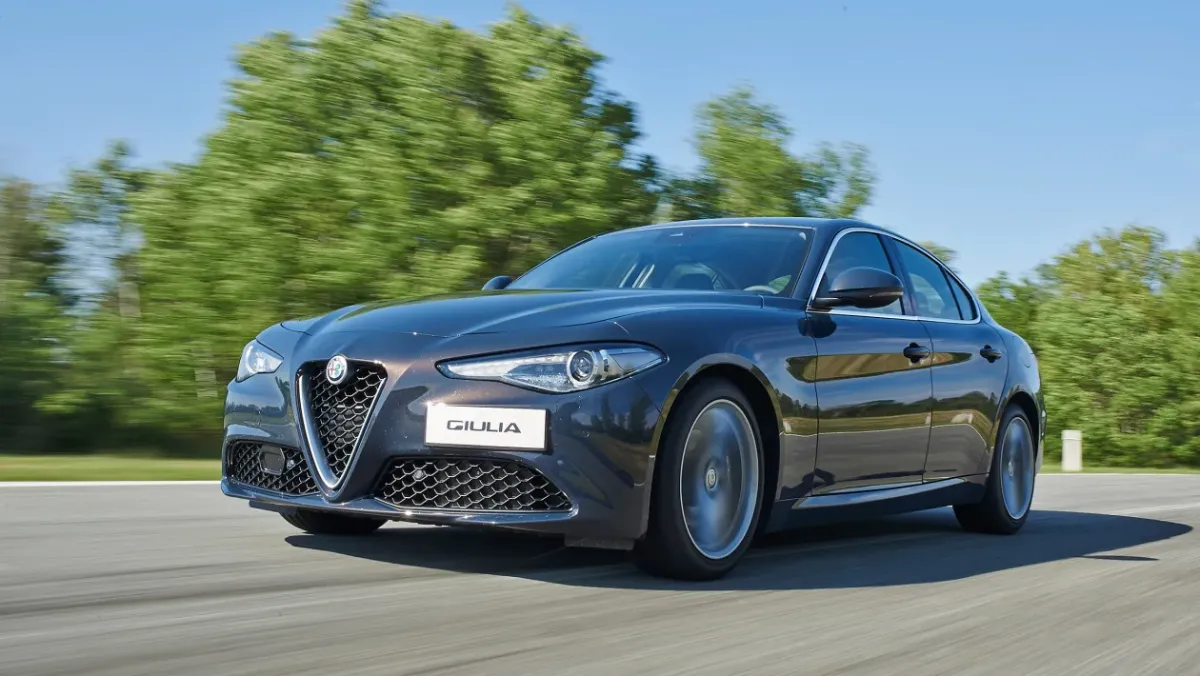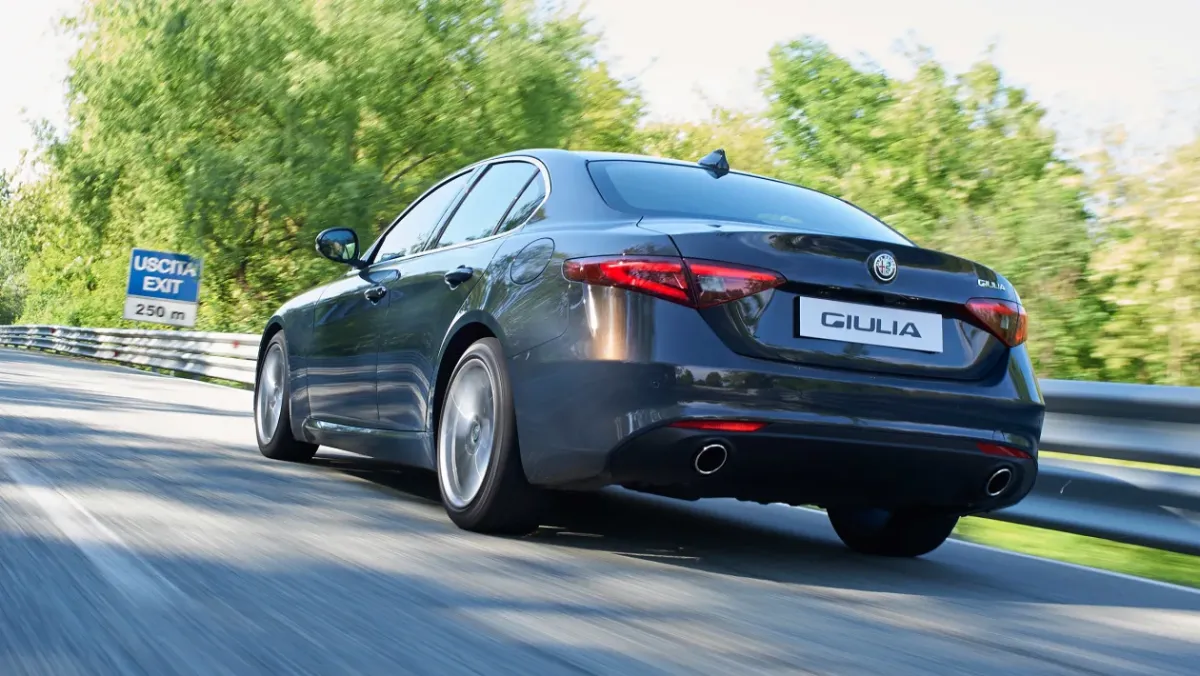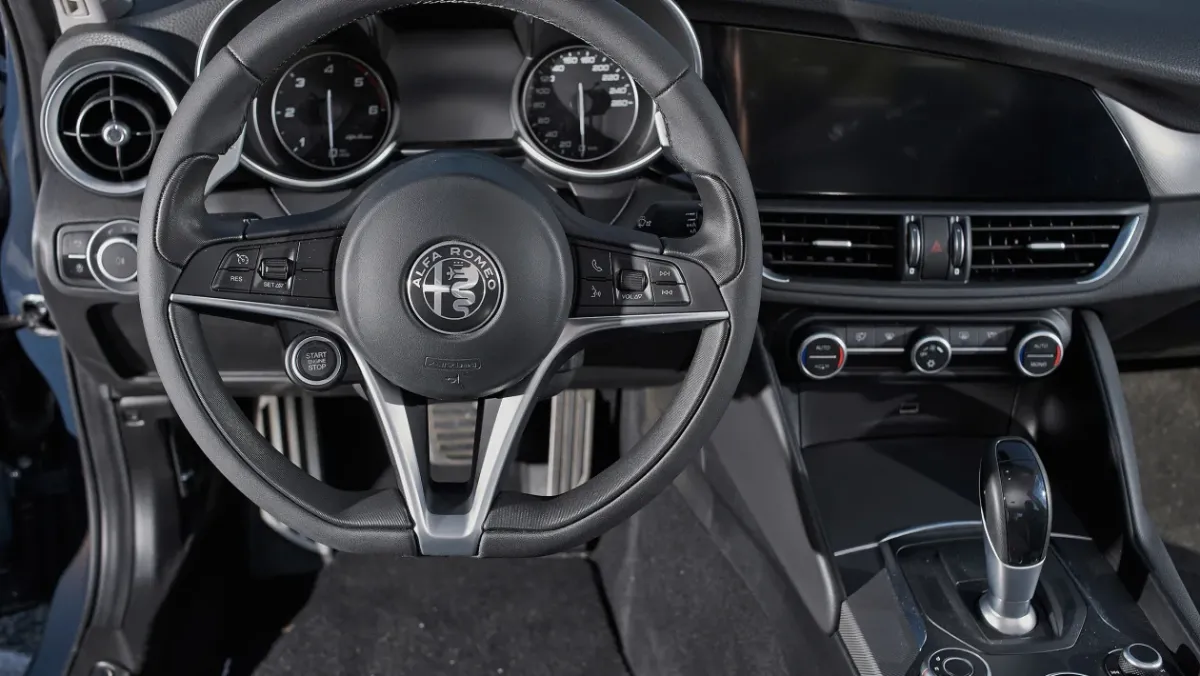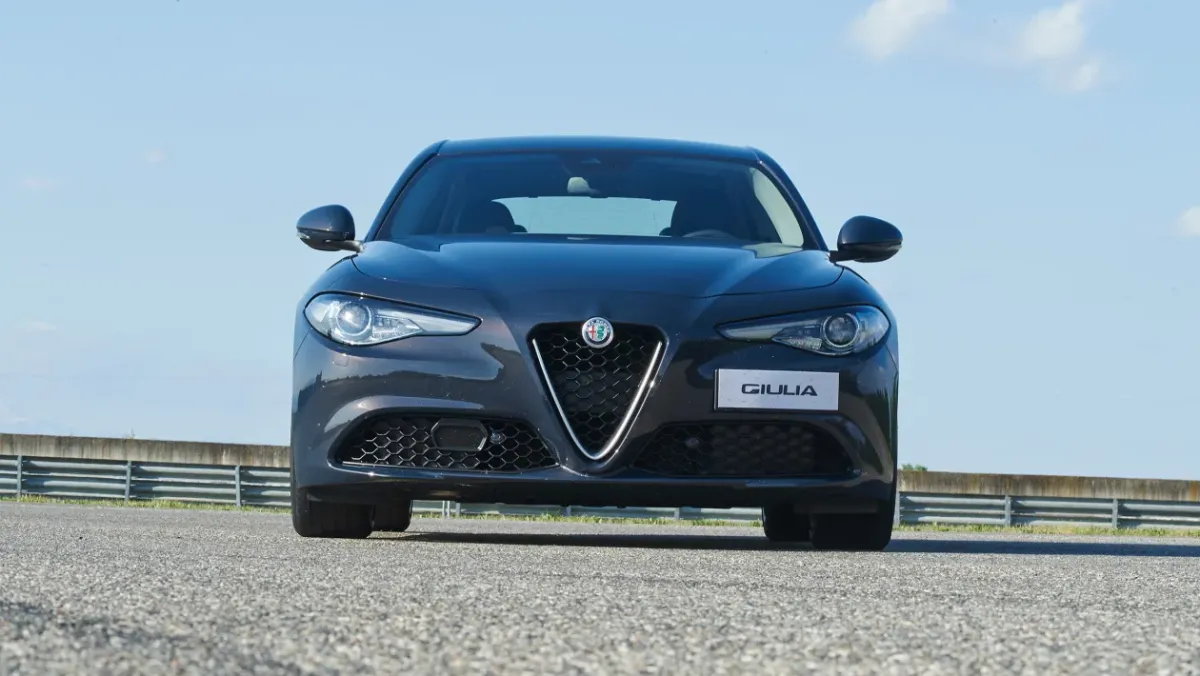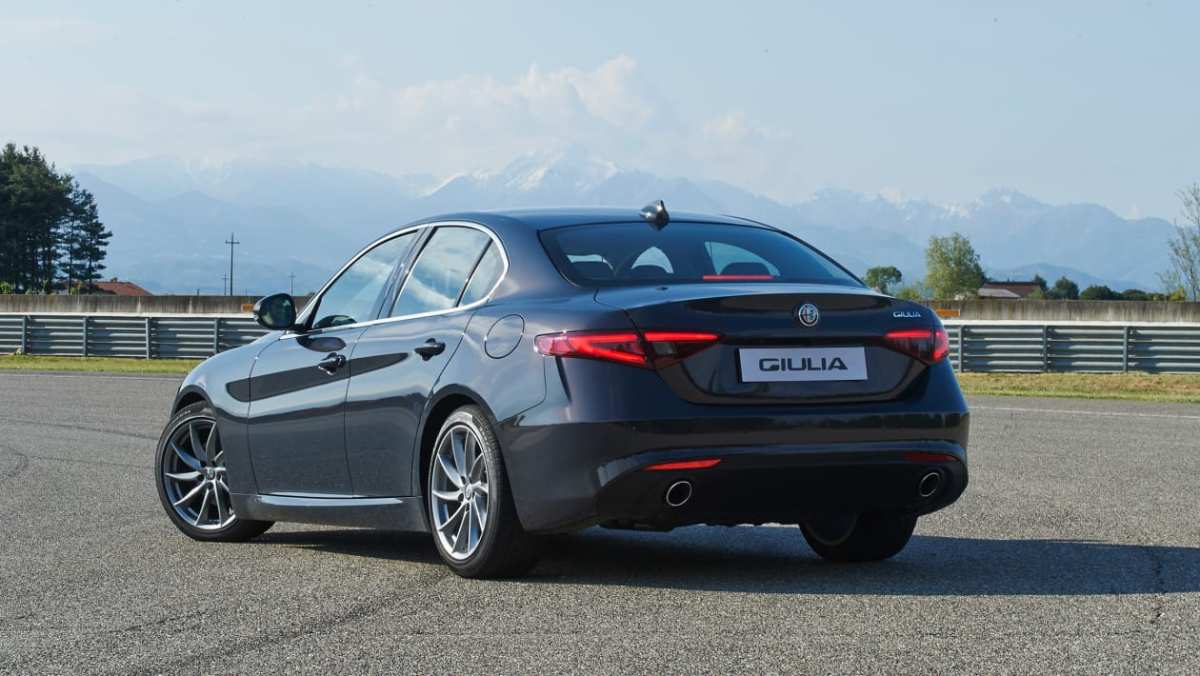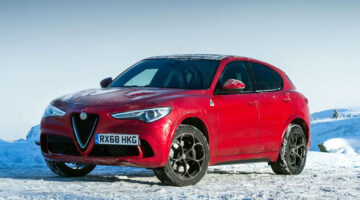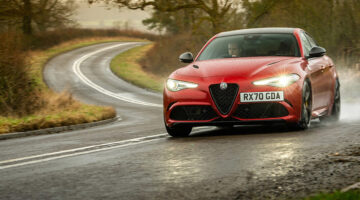In such a competitive marketplace, the Giulia holds its own and represents Alfa’s best effort in years.
PRICE from $37,000
There has been much said about the new Alfa Romeo Giulia, but whereas most of the attention has been levelled at the M3-rivalling Quadifoglio, the cooking Giulia models are if anything even more important, as these are the cars that need to appeal to a far wider audience.
Now available solely with a 2-litre turbo four-cylinder in two states of tune alongside the V6 Quadrifoglio, the Alfa Romeo Giulia remains a strong compact executive offering, adding flare to a market previously dominated by the big German manufacturers and occasionally infiltrated by Jaguar and the Japanese pair, Lexus and Infiniti.
As compact executive rivals are stronger than ever in their latest iterations, Alfa Romeo can no longer afford to merely get by with recycled platforms and hand-me-down engines. The Giulia’s platform is all-new (and shared with another new volume model, the Stelvio SUV), its engines freshly developed for this car, and it sends its power, like the majority of cars in this class, to the rear wheels.
Fittingly, Alfa Romeo’s effort has paid off – and whether Quadrifoglio or not, this is one of the best cars the company has produced in a very long time. While it lacks polish in places, its talented chassis, strong engines, light weight and improved quality all make this a very competitive offering.
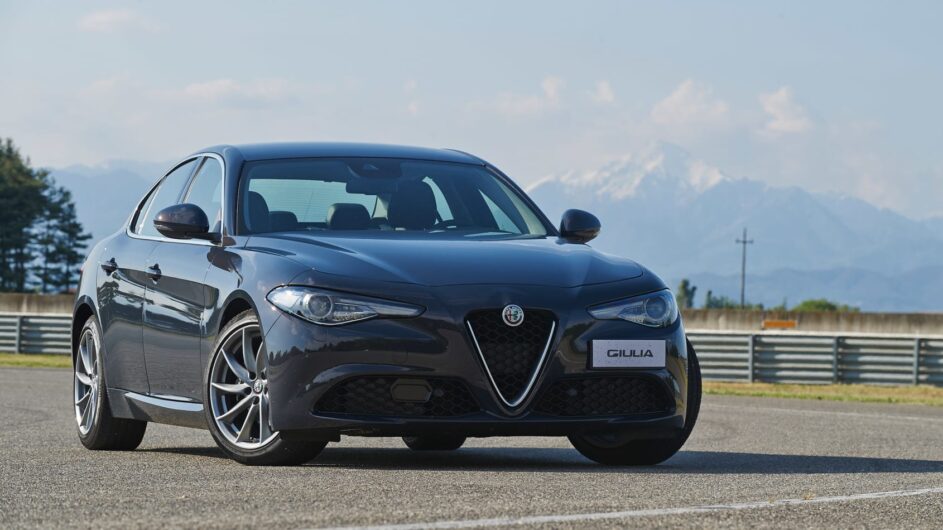
Prices, specs and rivals
Priced from $37,000, the Giulia is pitched at the premium offerings in the compact executive segment, which is dominated by German brands. The Giulia range is divided into five trim levels, bookended by the base and Veloce models.
Standard kit on the entry-level model comprises a multifunctional steering-wheel, automatic emergency braking and rear parking sensors, with a 6.5-inch screen mounted on the centre console for the informtainemt system. The base trim is exclusively powered by the 197bhp, 2.0-litre four-cylinder petrol engine.
The middling Veloce starts at $52,748, with the price bump justified through the addition of an extra 79bhp (for a 276bhp total), chassis tweaks and a limited-slip differential. There’s more kit as standard too, with uprated Bi-Xenon headlights, an enlarged infotainment display and 19-inch wheels setting it apart from the base car.
The Estrema model is style-centric with exterior touches lending a sportier aesthetic, with a number of tweaks taking inspiration from the range-topping Quadrifoglio. Alfa Romeo’s SDC (Synaptic Dynamic Control) suspension is also unique to the Estrema, as are Alcantara sports seats, interior carbon fibre trim and an uprated Harmon Kardon sound system.
Though the lineup has been simplified in recent years, the Giulia models offered largely reflect the variety of derivatives offered by the Audi A4, BMW 3-series, Mercedes-Benz C-class. There is a gap though between the Estrema and Giulia Quadrifoglio that the brands above have managed to fill with the S4, 340i and C43, respectively. Whereas the German trio are available in multiple bodystyles such as fastback or estate, the Giulia is saloon only.
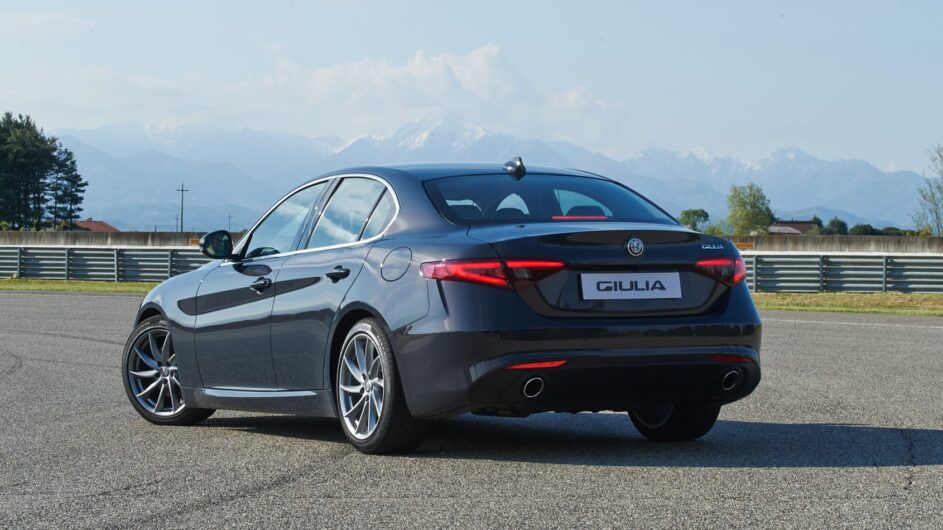
Performance and 0-100kph time
Alfa Romeo tried hard to ensure that, on paper at least, the Giulia does not compromise too heavily that it falls off a buyer’s shopping list, but its recently simplified range does reduce appeal. The entry-level car produces a respectable 197bhp for a 6.6sec 0-100kph time, more favourable than the entry-level 181bhp BMW 3-series, but stats are less attractive further up the range.
Available in the Veloce and Estrema is the 276bhp 2-litre turbocharged four-cylinder, capable of a 5.8sec 0-100kph time and a 239kph top speed. Though this does put the Giulia ahead of the middling BMW 330i with 245bhp, you’ll pay from $4910 more for an Alfa with that powertrain.
Where the Giulia really falls behind is its lack of hybrid and diesel powertrains, with BMW’s 3-series offering a wide range of options to suit all use cases. BMW’s potent M340i and M340d, and Audi’s S4 also plug gaps in their respective lineups that the Giulia misses.
The lack of an M340i-rivalling six-cylinder option might be considered a limiting factor for those after a bit more punch, but for the performance minded buyer, the fantastic 503bhp Quadrifoglio does still remain one of the finest performance saloons on the market. With more than enough performance chops to take on rivals like the M3 and C63 AMG, the twin-turbo V6 model is a worthwhile addition to your sports saloon shopping list.
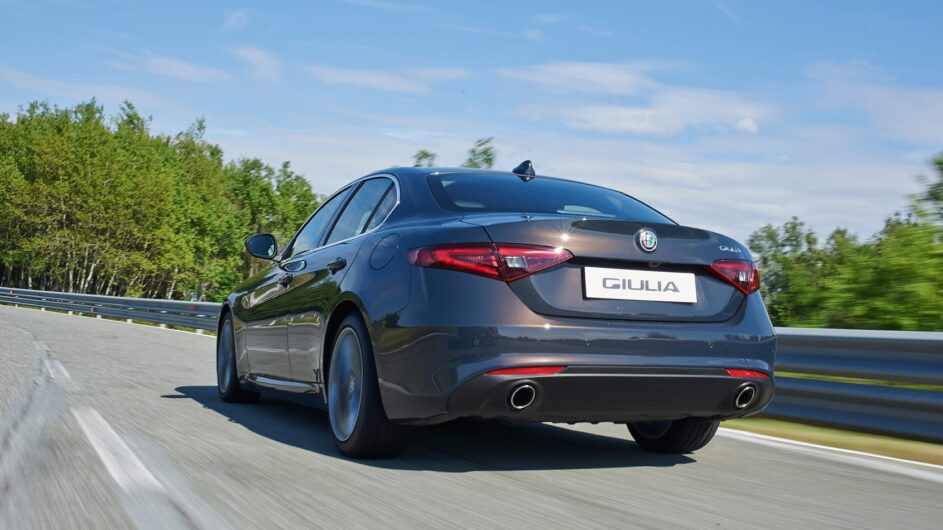
Engine and gearbox
Though the Giulia was launched with a range of five engine choices, Alfa Romeo has since simplified the range down to a 2-litre turbocharged four-cylinder in two states of tune, and the range-topping 2.9-litre twin-turbocharged V6 in the Quadrifoglio.
For private buyers and those less concerned with CO2 numbers, the entry 2.0-litre petrol Giulia produces 197bhp, putting power through the rear wheels. The new all-alloy engine features MultiAir technology – hydraulically actuated variable valve timing – along with direct fuel injection and a twin-scroll turbocharger.
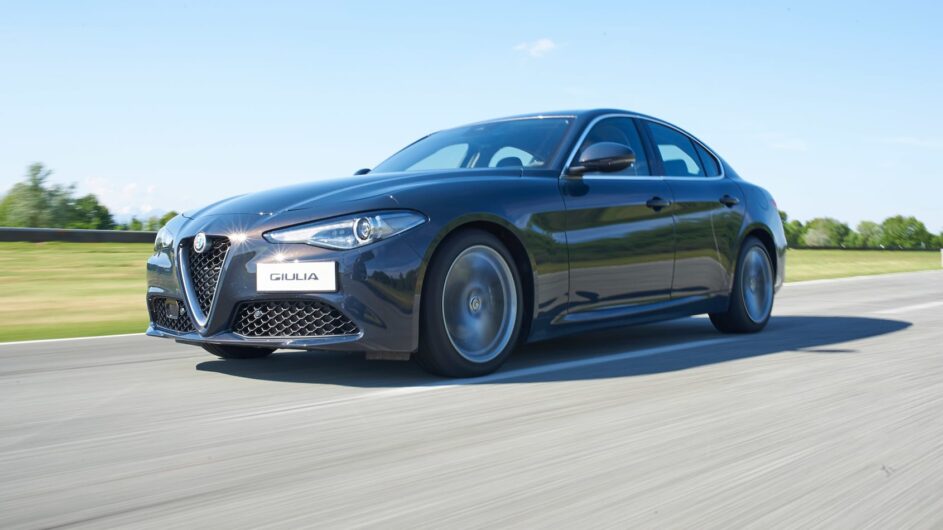
Peak torque of 243lb ft is available from just 1750rpm and is deployed through an eight-speed torque-converter transmission. The 8-speed ZF unit on offer though is a good one, offering fast concise shifts that are immeasurably improved when summoned on the optional column mounted paddles.
For those wanting a bit more punch, Alfa offers a more powerful 276bhp version of the same 2.0-litre engine in the Veloce and Estrema models – torque comes in at a healthy 295lb ft.
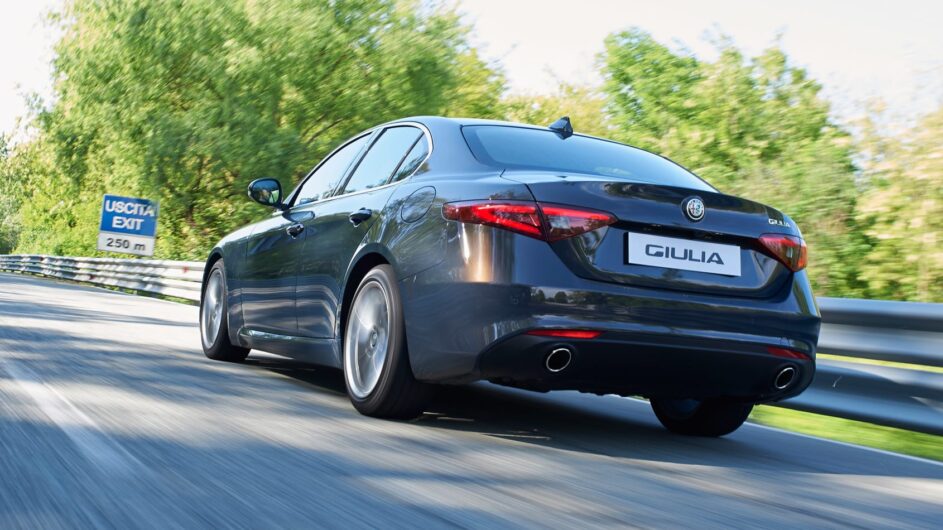
Ride and Handling
On the move, the car is nicely refined and instantly likeable. The $2420 Performance Pack brings variable dampers, paddles behind the steering wheel for manual shifting, and a limited-slip differential. The damper modes are selected via the now-familiar Alfa DNA switch, which also affects other attributes such as the throttle and steering. In its regular setting the suspension gives a ride that’s firm but very well controlled, and there’s a sense that the taut shell is allowing it to get on with the job at hand.
With the 19-inch alloy wheels there’s an unyielding quality to the Alfa’s low-speed ride around town that a more generous tyre sidewall may mitigate, but it’s not something that anyone interested in a sports saloon would baulk at, and it’s more comfortable than a Jag XE.
What really gives the Giulia its own personality is its quick steering. It takes a period of acclimatisation, but it has a natural weight and feel and it’s not so extreme as to make the car feel nervous. You soon learn to make small, precise inputs, entirely in keeping with the inherent poise and fine balance of the chassis. It’s the sort of car that encourages a brisk, enthusiastic driving style almost everywhere.
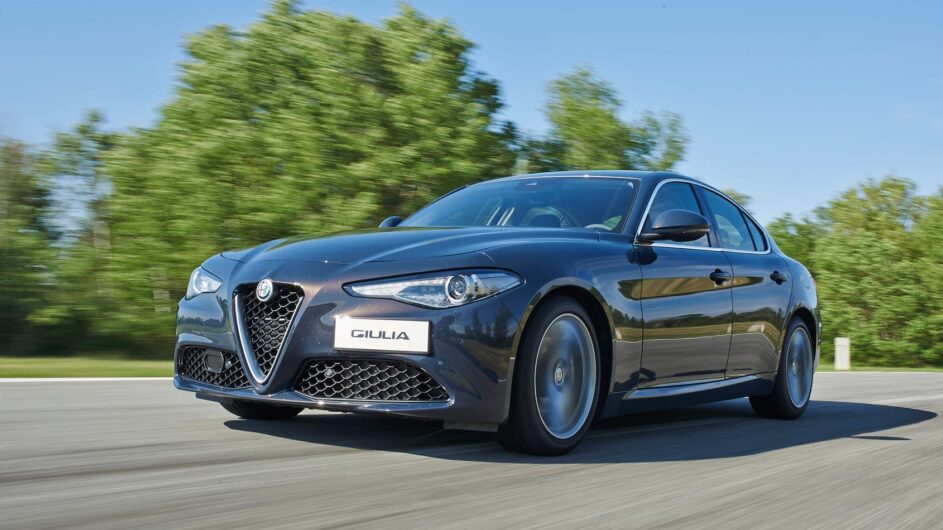
L/100km and running costs
A positive result of Alfa Romeo’s efforts in weight saving, the Giulia exhibits impressive economy numbers, which should help keep it desirable on the company car list. Though the highly economical diesels have now been ditched from the range, up to 7.1 L/100km (WLTP combined) in the base-level Sprint put the Giulia just about on par with the BMW 3-series and Audi A4.
The big issue with the Giulia is in expected depreciation, as the Italian car will be unlikely to retain its value like most established rivals. Combined with a comparatively high purchase price, it could prove to be a deal-breaker for company buyers who will need to take it into account more acutely, and may result in less favourable lease deals than some of the cast-iron Germans.
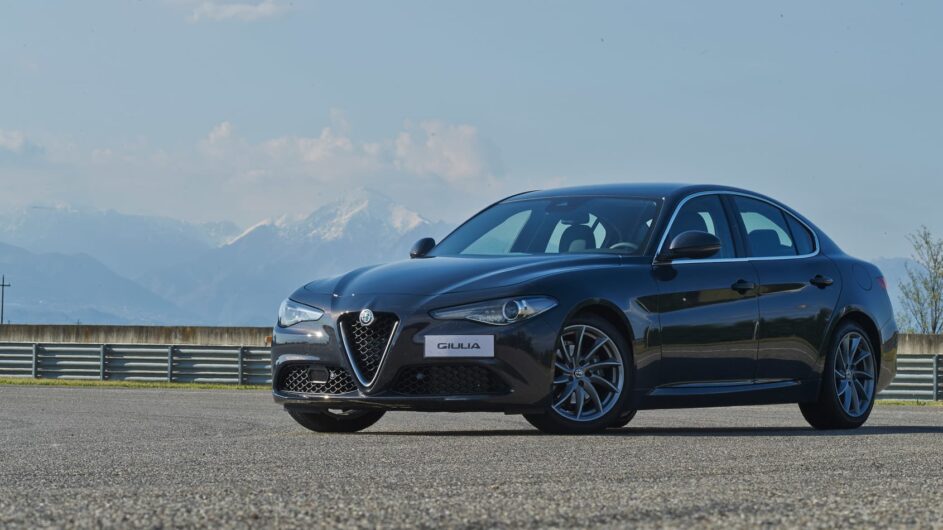
Interior and tech
Alfa Romeo’s ‘skunkworks’ development of the Giulia may have brought it to market in a shorter time frame than usual, but it has not come without compromise. In Alfa Romeo’s defence, one must look hard to see where the money has been saved, but there are signs of it in the interior.
The design itself is attractive, with reoccurring Alfa Romeo hallmarks like cowled instruments and a lovely three-spoke steering wheel. Instead, it’s the use of materials that leaves a little to be desired. Crucial touch points like the gearstick and infotainment controllers feel cheap and flimsy, and is an area where the Audis, BMWs and Mercedes of this world have taken to the nth degree.
In distinct contrast to these are the lovely, albeit optional, aluminium paddles, which feel like they have been taken straight off an Italian supercar. Specifically, they’re much like those found on the Ferrari 488. No rival offers such a satisfying method of interaction with its automatic gearbox.
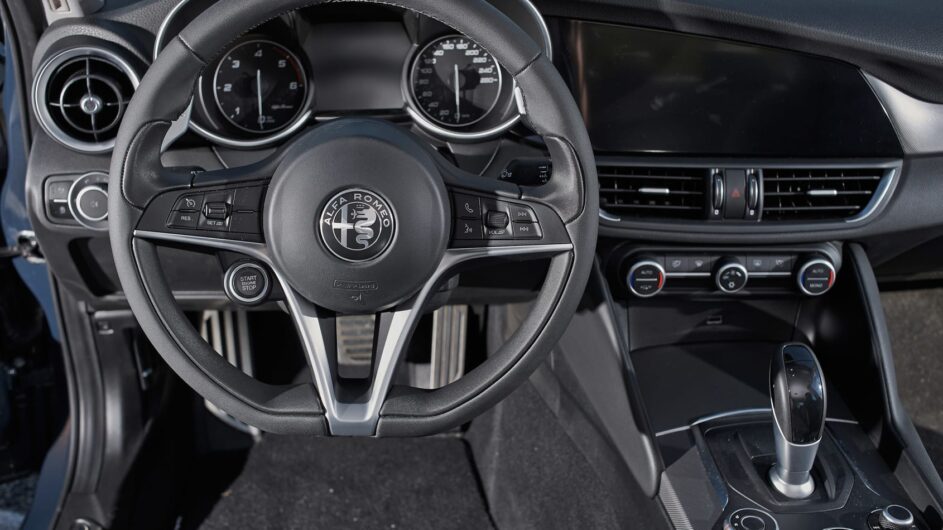
Space wise, the Giulia is about right for the class, with more passenger room than the titchy Jaguar XE, but not quite as cavernous in the back or boot as an Audi A4. The lack of an estate variant will limit its appeal to some buyers, but the Stelvio SUV is likely to fill the void to those who don’t mind driving around something a little taller.
The infotainment system takes plenty of cues from German systems, displayed on a screen that is hidden behind a black panel when not in use. The layout is effective and although it is not as crisp or slick to use as the benchmark BMW i-drive or Audi MMI, it’s not so bad as to be a deal-breaker like the system in a Lexus IS.
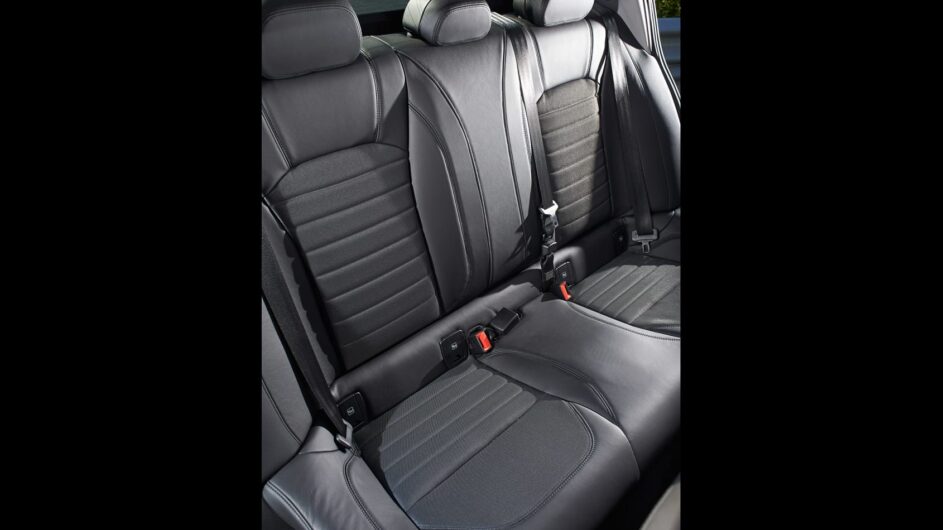
Design
Thanks to an all-new rear drive chassis, Alfa Romeo designers were gifted the chance to reform Alfa Romeo design for this next generation. Hardly a cradle of distinctive design, the compact executive class doesn’t provide a huge amount of creative expression beyond branding exercises, but the lack of aesthetic distinction seen in the Giulia is disappointing, especially compared to its 159 predecessor and the 156 before that.
Despite the traditional Alfa Romeo grill, from most angles one might struggle to identify the Giulia. Its oversized headlights lack the aggressive scowl of the 159 and despite pleasant details like some attractive wheel options, the overall design is disappointing considering Alfa Romeo’s track record.
The Alfa’s saving grace may well be its relative rarity on local roads, as in the sea of BMW 3-series and Audi A4s, the fact it is not a German compact executive might well be enough for most.
This article originally appeared at evo.co.uk
Copyright © evo UK, Dennis Publishing

